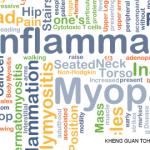“We found that associated autoantibodies, such as anti-dsDNA, occur before the onset of nephritis, anti-cardiolipins before thrombosis and rheumatoid factor before polyarthritis,” she said.
In a study using the military repository sera, researchers found different ethnic groups and genders progress to SLE differently. “African American men tend to have a very rapid clinical presentation, with many presenting with no prodrome at all—men who are just defined as healthy throughout their medical records, until they present at an intensive care unit with renal failure and major organ involvement,” Dr. James said. “Caucasian women tend to be more likely to sequentially add criteria slowly along the way.”3
The repository sera was used for another study that showed lupus patients with anti-cardiolipin antibodies early in their disease course tend to have more severe, varied outcomes.4
Pre-Classification Autoantibodies
Autoantibodies are present in approximately 88% of lupus patients’ blood years before diagnosis. Anti-Ro, anti-La and anti-cardiolipin tend to be present for 3.4 years or more before patients meet SLE classification criteria. Anti-Sm, anti-dsDNA and anti-C1Q, tend to occur within six to nine months of lupus classification.5
Interferon (IFN) activity occurs before SLE patients develop classified disease, said Dr. James. In a multi-center, collaborative study published in 2016, she and her fellow researchers analyzed active duty military personnel who had developed lupus, and tested interferon activity and several interferon-associated mediators. Then, they examined when these mediators occurred: either before or concurrent with autoantibody production or after disease onset. Several autoantibodies preceded interferon-alpha activity, which preceded classified SLE.6
“In these patients, anti-Ro was still one of the first autoantibodies we saw,” she said. “They developed a number of different autoantibodies before we saw increases in interferon activity. Anti-chromatin occurs early, but anti-dsDNA tends to occur very close to the same time that we see elevations in interferon activity.”
The number of interferon-related soluble mediators, including IP-10, BLyS and IFN-c, increased as patients moved toward lupus classification. When researchers matched SLE patients with healthy controls for age, gender and length of time in the military, so that samples would have been stored for the same length of time, “what we [saw was] not only an increase in interferon-associated molecules as they moved toward the time of diagnosis, but also an increase in the number of different inflammatory markers. But some are still present very early, like IL-6,” Dr. James said.
Soluble mediators may help differentiate who will transition to active lupus. Within 0.84 to 3.4 years before diagnosis, researchers identified soluble mediators, such as interleukin (IL) 4 and IL-5, that drive autoantibody development in preclinical lupus patients, along with interferons and IL-17. In one model, they found ANA, MIG, IFN-a and IP-10 may be predictors of lupus in that approximate three-to-one-year, pre-diagnosis window, while a model that did not incorporate ANA information showed IL-5, IL-6 and TGF-b as possible predictors.

